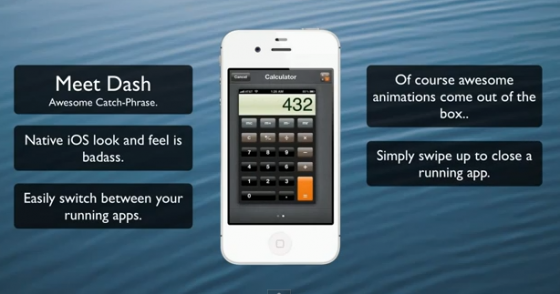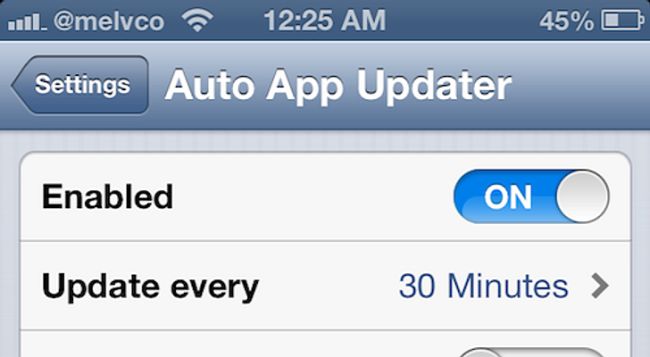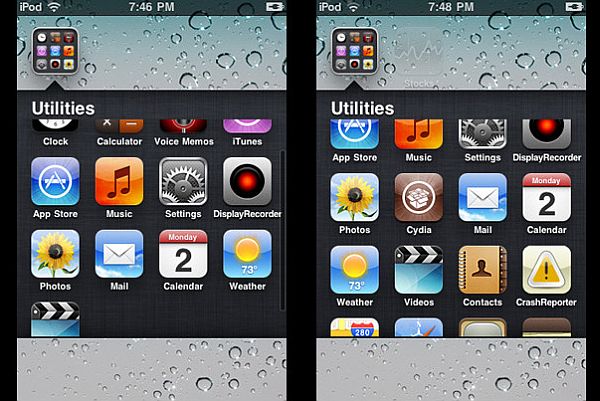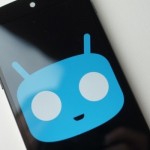Inbox icons, subject line sorcerers, CTA kings – the results are in. The 2025 You Mailed It Awards by Everlytic have crowned their champs, with Old Mutual Rewards and Machine_ taking…
10 iOS 7 features inspired by jailbreaks

Apple’s iterant updates to its mobile operating system iOS have traditionally been met with applause — creating features which are simple, intuitive, and easy to use. However, this hasn’t stopped a more technical variety of iOS users from making personal or widespread changes throughout the system to better serve their needs – aesthetic or otherwise.
Interestingly, Apple has played the fastidious schoolboy taking notes on what its own consumers have been crafting — and in recent software releases, an unlikely brand of plagiarism-on-plagiarism has emerged from the depths of 1 Infinite Loop. Here are 10 iOS features which have been inspired by jailbreaks:
Control Center

There was little escaping Apple’s introduction of Control Center as being branded as a jailbreak rip-off. Large demand between both users and the greater jailbreak community for a more intuitive method of changing essential settings undoubtedly forced — or, at least, gently encouraged — Apple’s hand into incorporating such a feature in iOS 7.
Jailbreakers – until iOS 7 – were familiar with NCSettings, which incorporated various toggles to manipulate key iOS features, such as Airplane Mode, Bluetooth, or more mundanely, screen brightness. Similarly, Apple included likewise feature manipulation inside Control Center – minus the ghastly skeuomorphic stitched linen interior which dominated earlier versions of iOS.
Parallax

Parallax refers chiefly to the layering of interfaces to create a sense of depth, as well as the use of 3D effects to create a sense of movement. Jailbreak communities were on top of this trend in 2011, with tweaks such as 3D board and FastBlurredNotificationCenter leading the charge in 3D movement and layering, respectively.
Live clock
Apple was quick to leave its trademark “attention-to-detail” stamp on the iOS 7 front screen, in the form of the Clock app icon with inspiring, amazing, and life-altering… moving hands.
LiveClock, a jailbreak tweak, accommodated for this long before iOS 7, and featured similar implementation to Apple’s live clock app icon. Heaven forbid users make it redundant by gazing upward to the status bar.
Panoramic and Live wallpapers
Rather notoriously, Apple chose to introduce capabilities to create panoramic and moving “live” wallpapers in iOS 7 – largely an inclusion derived from the popular jailbreak trend to create such wallpapers in earlier versions of iOS.
While chiefly a concern amongst iOS users due to the heavy battery drain required to use such features, jailbreak features such as LiveWallpaper introduced these capabilities to iOS users prior to iOS 7’s introduction.
Blocking phone calls, messages, and FaceTime
In iOS 7, Apple introduced the ability to block cell phone numbers from attempting to make phone calls, messages, or FaceTime requests to one’s device. Jailbreak communities got there first in the form of iBlacklist — a tweak which enabled users to create lists of contact numbers they’d simply not exchange Christmas messages with.
App switching and multi-tasking

Interestingly, while iOS 7’s app switcher does draw cues from Android’s implementation of the feature, an early jailbreak known as Dash provided many of the features iOS 7 users enjoy today.
Automatic app updating

However, jailbreak communities enabled this capability before iOS 7’s announcement, with the aptly named Auto App Updater tweak supplying this functionality as early as iOS 6.
Folders

A jailbreak by the name of Infinifolders clinched Apple’s race to the post in allowing users to store apps within infinite folder pages – which rather conspicuously, is very similar to the folder benefits iOS 7 users enjoy today.
Safari’s Smart Search
Apple’s iOS version of Safari existed as a dark-age caveman amongst many more sophisticated browsers for years. In iOS 7, Apple evolved their champion web browser to not only accommodate a simpler, more dapper design, but also an omnibox capable of handling search terms as well as URLs. A popular jailbreak known as Safari UniBar allowed earlier iOS users this capability long before iOS 7 had been conceptualized.
Intuitive interfaces
Jailbreak communities are traditionally notorious for their burning desire to improve on Apple’s intuitive gestures and interfaces throughout iOS. iOS 7 saw significant introductions of simplified gestures throughout the operating system, such as the ability to swipe to take a step back in some core applications, or the ability to access Notification Center on the lock screen or during a phone call.
Jailbreak tweaks such as SwipeBack, which allowed for simple swipe gestures to navigate through iOS, or Bulletin, which allowed access to Notification Center from the lock screen, were improving on such features long before Apple formally introduced them.
NBSettings via AppleWeBlog
FastBlurNotification via ISOfans
Dash via apfeleimer
InfiniFolder via CellphoneBeat


